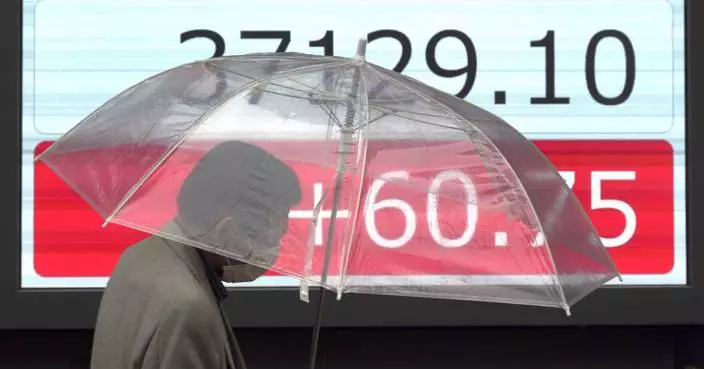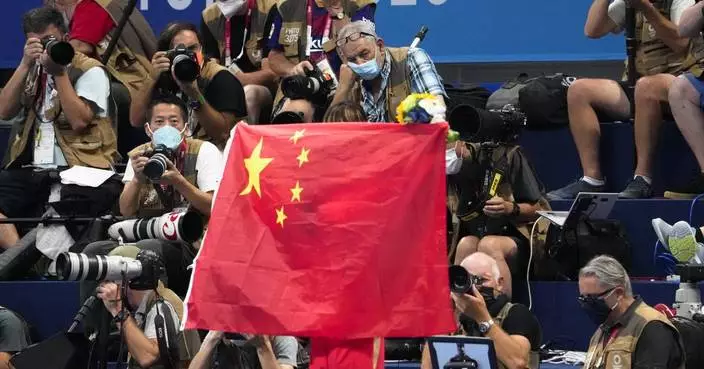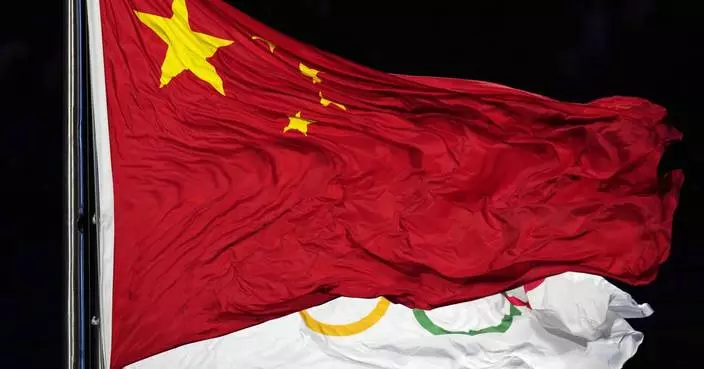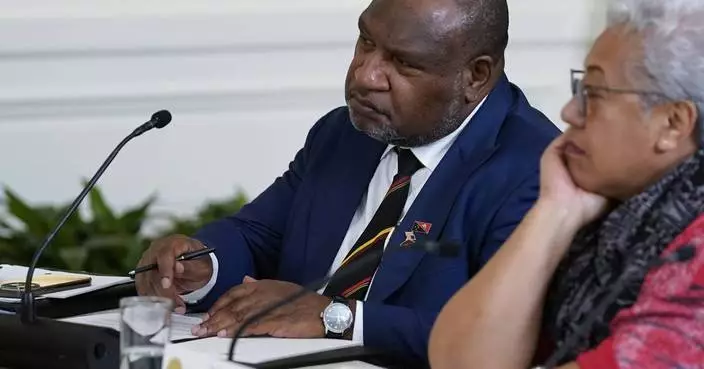This is a miracle to the family!
A very rare condition happened to a Chinese baby that he had three legs in his body.
Click to Gallery
This is a miracle to the family!
Xiao Fei underwent a 10-hour complex operation at a hospital in Shanghai on Mondy to remove the middle leg without function.
Surgeon Chen Qiu described Xiao Fei's operation as "highly complicated". To keep Xiao Fei's right leg, which was shaped like a hand and could not function properly, doctors tried to transplant the foot on the extra leg onto his right leg.
The director of the Department of Urology of the hospital, Bao Juan, said surgeons would bring Xiao Fei's right testicle down from the abdomen to its normal place in the same operation.
Xiao Fei's father Ma Xiaolong thanks to hospital, "I thank the doctors very much. I was so nervous sitting outside the surgery room, but now after I see my child, I'm not nervous anymore."
The 11-month-old baby, nicknamed Xiao Fei, had three legs which surgeons said the extra one didn't belong to him, but his partially formed parasitic twin. The case occurs in around one in a million live births.
According to local reports, Xiao Fei's family come from Xinjiang in western China. His mother didn't find Xiao Fei's parasitic twin since she had not done regular pregnancy checks. She looked for treatments across China after giving birth to him. They were finally admitted into the Shanghai Public Health Clinica.
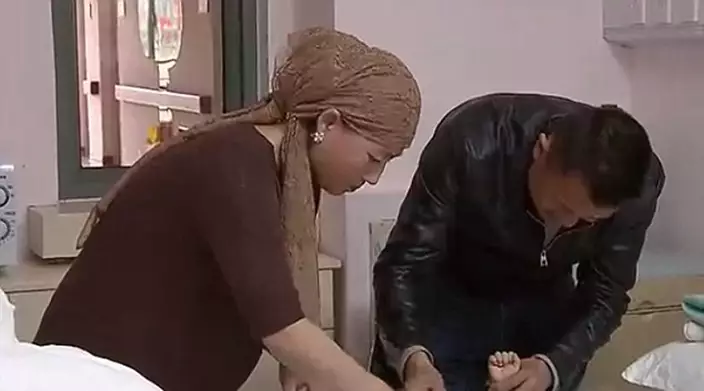
Online photo
Xiao Fei underwent a 10-hour complex operation at a hospital in Shanghai on Mondy to remove the middle leg without function.

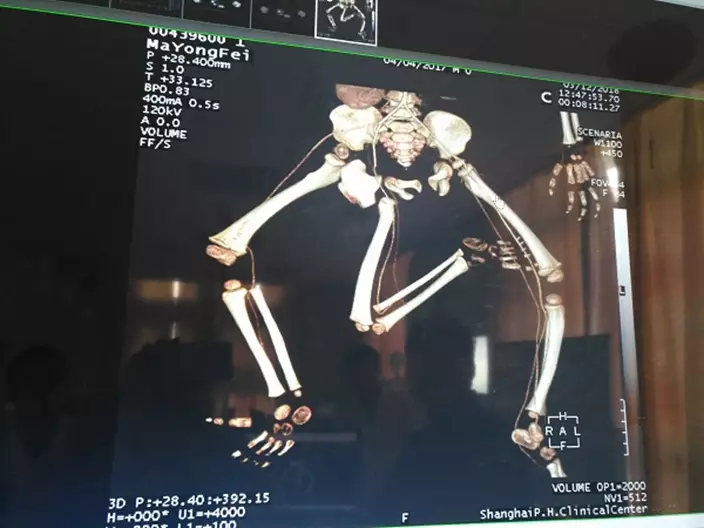
Online photo
Surgeon Chen Qiu described Xiao Fei's operation as "highly complicated". To keep Xiao Fei's right leg, which was shaped like a hand and could not function properly, doctors tried to transplant the foot on the extra leg onto his right leg.
Except for the extra limb, the baby had also suffered from a series of other illnesses, including an undescended testicle, abdominal hernia and congenital heart disease.

People's Daily

Dragon Television
The director of the Department of Urology of the hospital, Bao Juan, said surgeons would bring Xiao Fei's right testicle down from the abdomen to its normal place in the same operation.
The operation started from 10 am and finished at 7:35 pm. Doctors claimed it a success.
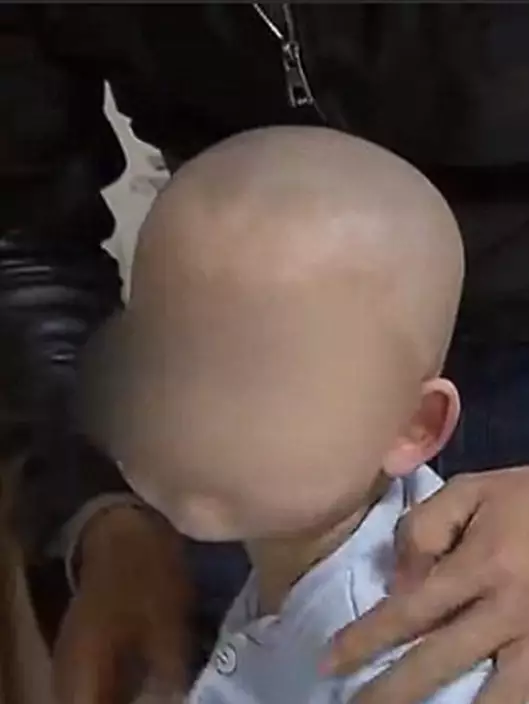
Dragon Television
Xiao Fei's father Ma Xiaolong thanks to hospital, "I thank the doctors very much. I was so nervous sitting outside the surgery room, but now after I see my child, I'm not nervous anymore."

Dragon Television
NEW DELHI (AP) — The hugely popular Chinese app TikTok may be forced out of the U.S., where a measure to outlaw the video-sharing app has won congressional approval and is on its way to President Biden for his signature.
In India, the app was banned nearly four years ago. Here's what happened:
In June 2020, TikTok users in India bid goodbye to the app, which is operated by Chinese internet firm ByteDance. New Delhi had suddenly banned the popular app, alongside dozens other Chinese apps, following a military clash along the India-China border. Twenty Indian and four Chinese soldiers were killed, and ties between the two Asian giants plunged to a new low.
The government cited privacy concerns and said that Chinese apps pose a threat to India’s sovereignty and security.
The move mostly drew widespread support in India, where protesters had been calling for a boycott of Chinese goods since the deadly confrontation in the remote Karakoram mountain border region.
“There was a clamour leading up to this, and the popular narrative was how can we allow Chinese companies to do business in India when we’re in the middle of a military standoff,” said Nikhil Pahwa, a digital policy expert and founder of tech website MediaNama.
Just months before the ban, India had also restricted investment from Chinese companies, Pahwa added. “TikTok wasn’t a one-off case. Today, India has banned over 500 Chinese apps to date.”
At the time, India had about 200 million TikTok users, the most outside of China. And the company also employed thousands of Indians.
TikTok users and content creators, however, needed a place to go — and the ban provided a multi-billion dollar opportunity to snatch up a big market. Within months, Google rolled out YouTube Shorts and Instagram pushed out its Reels feature. Both mimicked the short-form video creation that TikTok had excelled at.
“And they ended up capturing most of the market that TikTok had vacated,” said Pahwa.
In India, TikTok content was hyperlocal, which made it quite unique. It opened a window into the lives of small-town India, with videos coming from tier 2 and 3 cities that showed people doing tricks while laying down bricks, for example.
But for the most part, content creators and users in the four years since the ban have moved on to other platforms.
Winnie Sangma misses posting videos on TikTok and earning a bit of money. But after the ban, he migrated to Instagram and now has 15,000 followers. The process, for the most part, has been relatively painless.
“I have built up followers on Instagram too, and I am making money from it, but the experience isn’t like how it used to be on TikTok,” he said.
Rajib Dutta, a frequent scroller on TikTok, also switched to Instagram after the ban. “It wasn’t really a big deal,” he said.
The legislation to outlaw the app has won congressional approval and now awaits a signature from Biden.
The measure gives ByteDance, the app’s parent company, nine months to sell it, and three more if a sale is underway. If this doesn’t happen, TikTok will be banned. It would take at least a year before a ban goes into effect, but with likely court challenges, it could stretch longer.
In India, the ban in 2020 was swift. TikTok and other companies were given time to respond to questions on privacy and security, and by January 2021, it became a permanent ban.
But the situation in the U.S. is different, said Pahwa. “In India, TikTok decided not to go to court, but the U.S. is a bigger revenue market for them. Also, the Fourth Amendment in America is fairly strong, so it’s not going to be as easy for the U.S. to do this as it was for India.”
As Chinese apps proliferate across the world, Pahwa says countries need to assess their dependency on China and develop a way to reduce it as the apps can pose a national security risk.
The app is also banned in Pakistan, Nepal and Afghanistan and restricted in many countries in Europe.
“Chinese intelligence law and its cybersecurity law can allow Chinese apps to work in the interest of their own security. That creates a situation of distrust and it becomes a national security risk for others,” said Pahwa.
“There should be different rules for democratic countries and for authoritarian regimes where companies can act as an extension of the state,” he added.
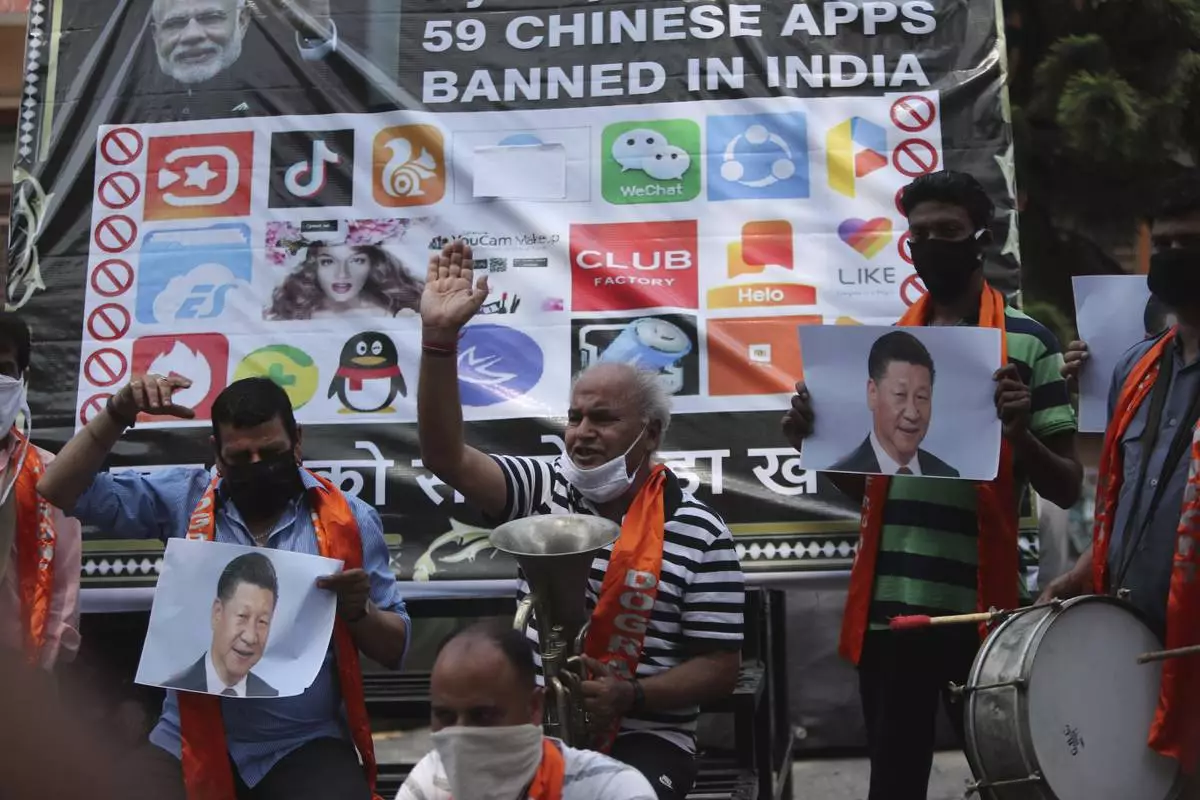
FILE- Activists of Jammu and Kashmir Dogra Front shout slogans against Chinese President Xi Jinping next to a banner showing the logos of TikTok and other Chinese apps banned in India during a protest in Jammu, India, July 1, 2020. (AP Photo/Channi Anand, File)













